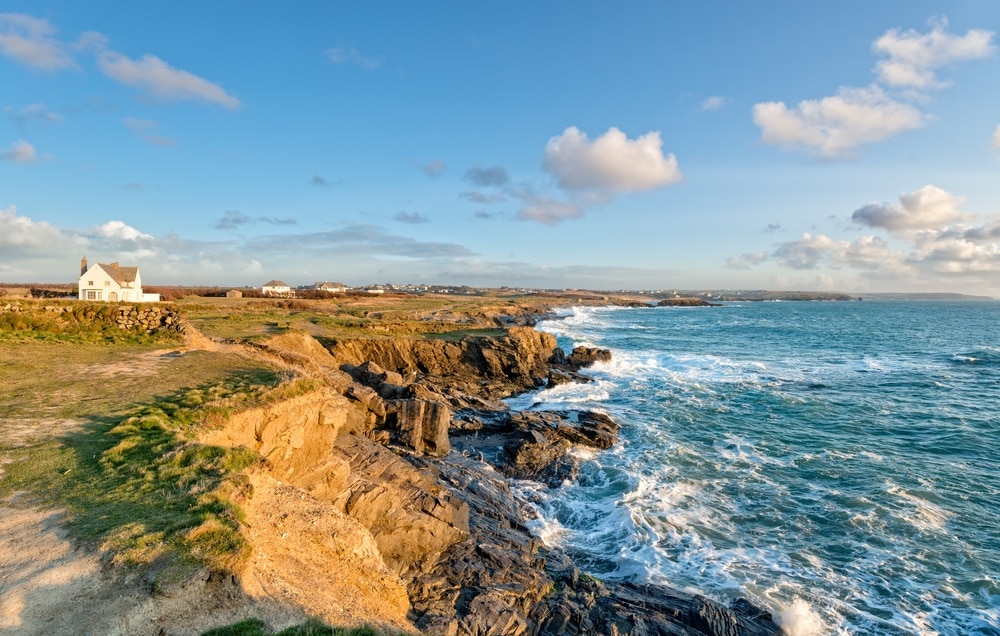
Have you ever spent a day at the beach and noticed that the water levels are constantly changing? You’re not alone. The ever-changing water levels of our ocean are a well-studied phenomenon known as tides.
But what causes tides in the first place? How could the water levels in our ocean possibly rise and fall on a regular basis?
In this guide to everything you’ve ever wanted to know about tides, we’ll answer these questions and more. Up next, we’ll take a closer look at the causes of tides and we’ll give you further insight into how tide cycles work.
What are Tides?
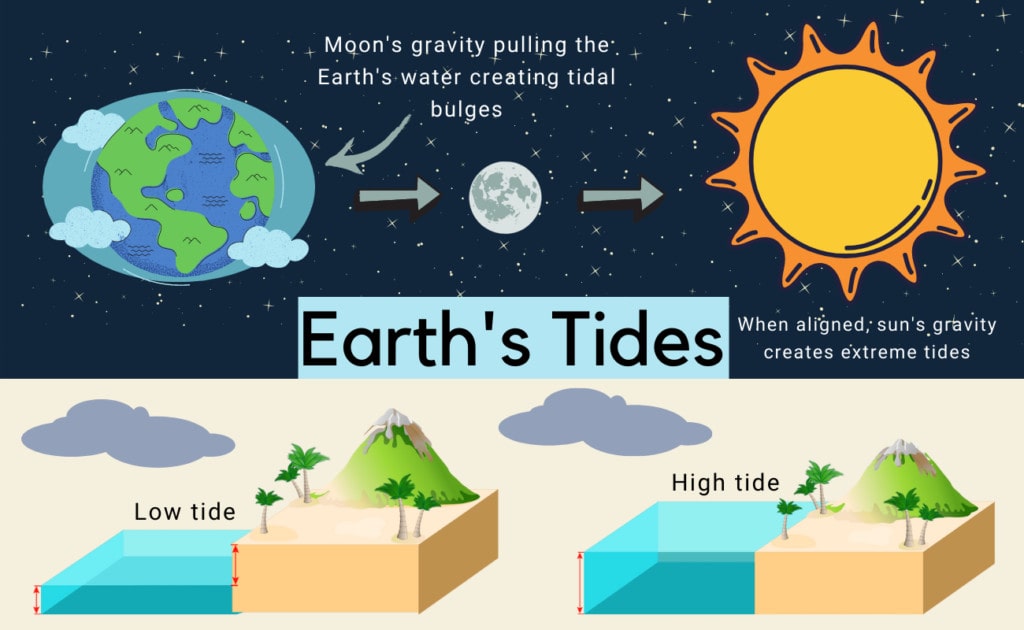
To get things started, let’s first define tides.
Merriam Webster defines the word ‘tide’ as the “alternate rising and falling of the surface of the ocean and of water bodies.” The dictionary states that the tides normally occur twice a day and that they’re the result of the gravitational forces of the moon and the sun.
However, we can also think of tides as a type of very long-period wave that moves through the Earth’s oceans. These waves form as a result of the gravitational forces of the sun and the moon. They cause the oceans to bulge on the sides of the Earth that are closest and furthest from the sun.
Tides are most apparent along the coast where we can see the level of the ocean clearly rise and fall. But, while we sometimes think of the tide as “coming in” or “going out,” it’s important to remember that the tides cause the height of the Earth’s oceans to move up and down—not in and out from the coastline.
Here’s a quick video that provides a brief overview of what tides are and how they work:
What Influences Tides?
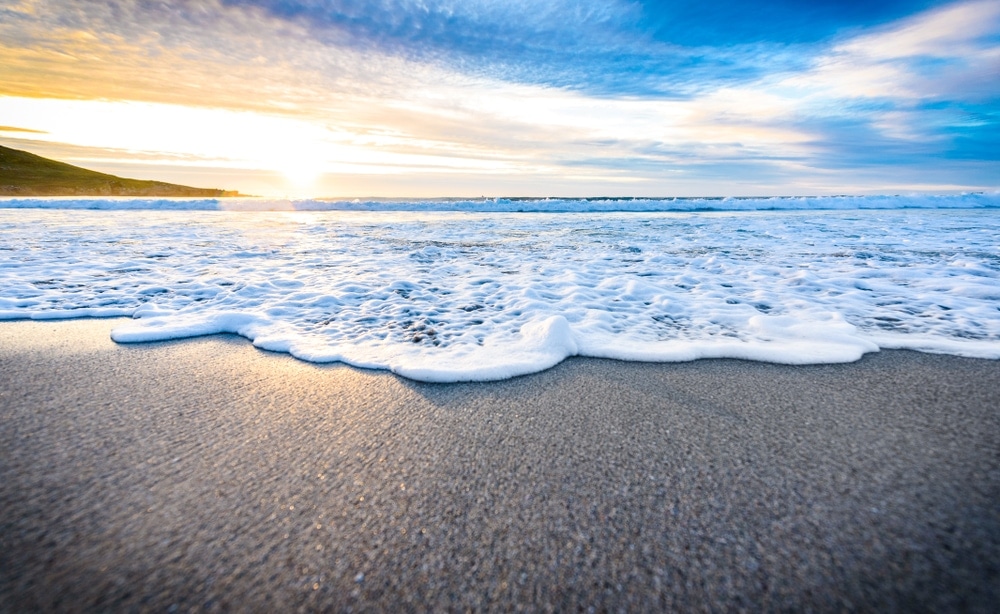
The Earth’s tides are one of the best-studied natural phenomena. Seafaring humans around the globe have long sought to understand how tides work because they have a major impact on sailing and coastal communities each day.
But tides are also surprisingly complex events that are influenced by a wide range of factors. Here are some of the most important things that influence and shape the tides that we experience around the world.
1. The Moon’s Gravity
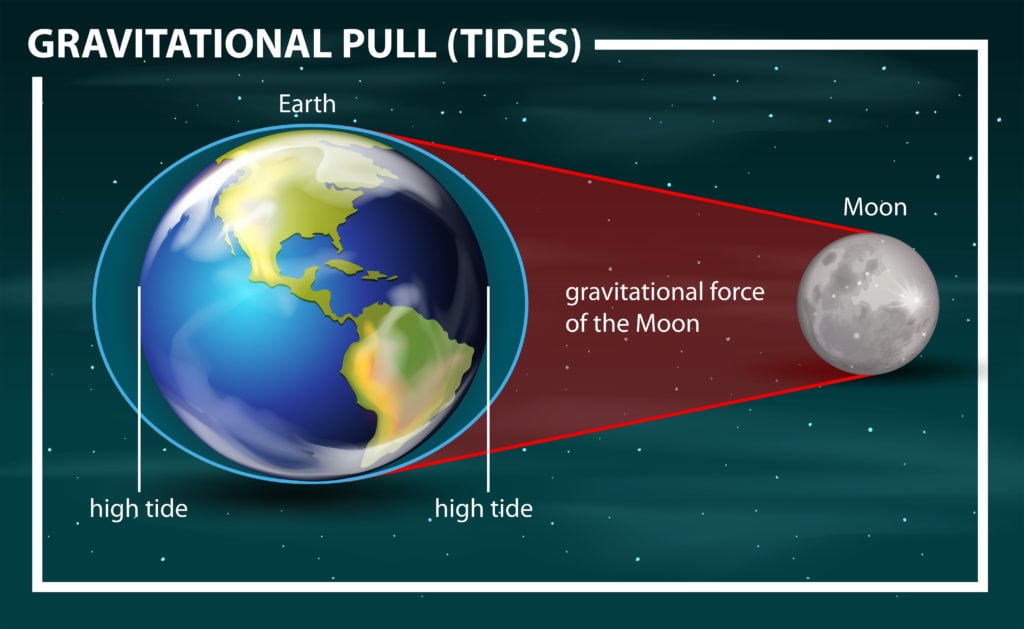
The biggest influence on the Earth’s tides is the gravity of our moon. Although it’s much smaller than the Earth, the moon also has gravity, which is the force by which a body (like a moon or a planet) can draw objects toward it.
When compared to the Earth’s gravitational force, the moon’s gravity is pretty darn small. But, since the moon is located so close to the Earth, its gravity is still strong enough to cause the Earth’s oceans to bulge, creating high tides.
This bulging happens in the direction of the moon due to an effect known as the tidal force. The tidal force is an effect that causes a celestial body (in this case, the Earth) to stretch along a linear plane toward the center of mass of another body (in this case, the Moon).
Interestingly, this tidal force causes the Earth’s oceans to bulge in two directions: toward and away from the moon. This is why we generally get two high tides a day. In the areas where the Earth’s oceans don’t bulge, we normally get two low tides each day.
Although the moon’s gravity isn’t the only factor that determines the tides, it’s the biggest single factor that causes the daily and cyclical nature of our tides. Without the bulging of the Earth’s oceans as a result of the moon’s gravity, we simply wouldn’t have tides as we know them today.
2. The Sun’s Gravity
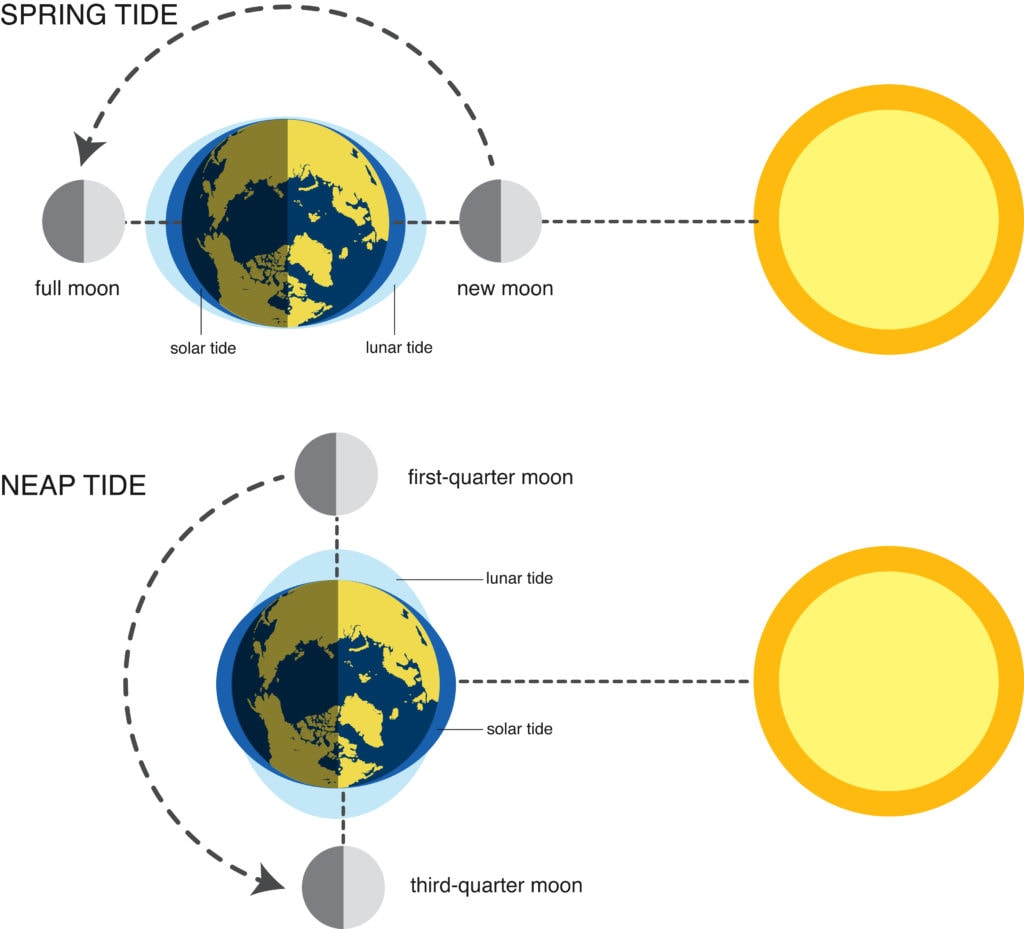
In addition to the moon’s gravity, the sun’s gravity also has a minor impact on our tides. The sun actually has much more gravitational pull than the moon, but it’s located much further away from the Earth, which limits its impact on our tides.
That said, the sun does provide some gravitational pull on the Earth’s oceans. As a general rule, solar tides are only about half as large as the tides created by the moon. But it’s important to remember that solar tides aren’t separate from lunar tides—they simply reinforce or counter the gravitational force of the moon.
This is most evident when the sun, moon, and the Earth are all in alignment.
When the moon is located between the Earth and the sun, the sun’s gravitational force helps the moon and creates more extreme tides. These are called spring tides. With spring tides, we get the highest high tides and the lowest low tides.
Conversely, when the Earth is located between the moon and the sun, the sun’s gravitational force counters the moon’s and creates less extreme tides. These are called neap tides. With neap tides, we get the lowest high tides and the highest low tides.
The moral of the story here is that the moon is the biggest influence on our planet’s tides on a daily basis. But when it comes to monthly tide cycles, the sun plays a pivotal role.
3. Local Topography & Bathymetry
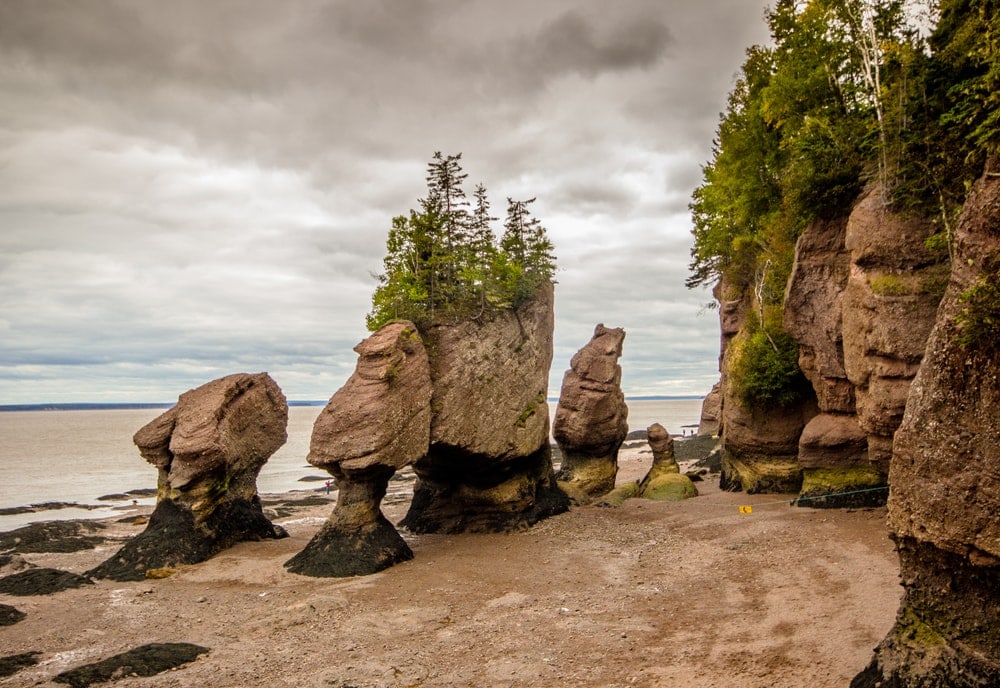
One influence on our planet’s tides that often goes unmentioned is the shape of any given coastline. While the moon and sun cause the tides, the local topography and bathymetry (underwater topography) of a coastal area have a huge effect on the character of a region’s tides.
In particular, coastlines located near continental margins tend to experience much more extreme tides than those located on mid-oceanic islands.
The shape of a coastline and its bays can also have a major impact on the types of tides that it experiences.
Bays that have a more funnel-like shape tend to have very dramatic tidal differences. For example, the Bay of Fundy in Nova Scotia has a funnel shape and it has the world’s highest tidal differences (normally around 50 ft/15 m)
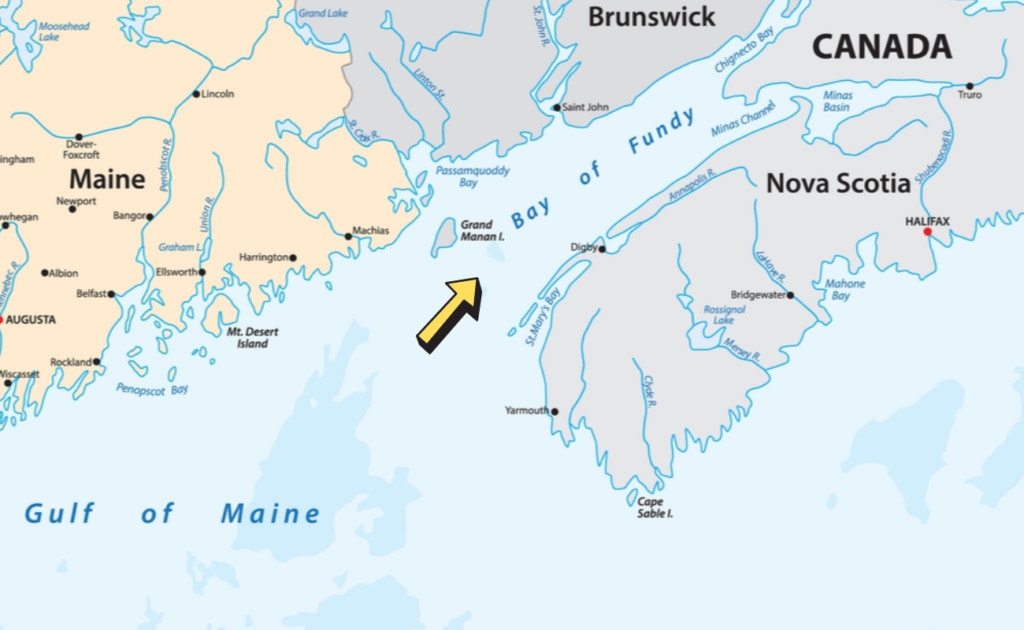
At the same time, coastal areas with island bays can actually be considered non-tidal. These shallow inland bays and narrow inlets can dissipate incoming tides, giving them a negligible impact on tidal height.
There are also some parts of the world that experience more or less than two high and two low tides each day due to local topography.
One of the best examples of this is the Solent near the Isle of Wight and Southampton in the UK, which experiences a double high tide (four high tides per day). There are also many places in the Gulf of Mexico that have only one high and one low tide each day (called a diurnal tide).
There are many reasons why these tidal differences happen, but they’re often the result of funky topography and bathymetry near a coastline.
4. Extreme Weather
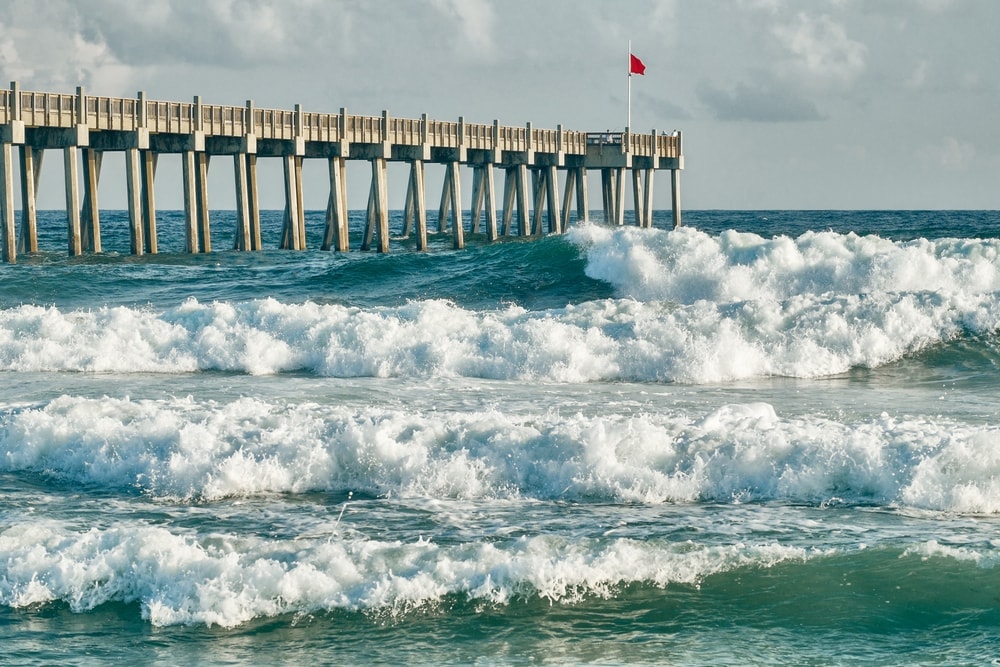
For the most part, tidal variations happen due to cyclical forces that have nothing to do with the weather that we experience on Earth. As a result, tidal predictions tend to be very, very accurate—so much so that most ship captains and skippers don’t think twice about using these predictions when navigating through shallow waterways.
But during periods of extreme weather, local air pressure, wind, and wave conditions can have a sizable impact on tides. These weather-based effects on tides include:
- Barometric Pressure Changes – When oceanographers make tidal predictions, they do so using average barometric pressure for a given region. However, periods of extremely low pressure can cause the sea level (and tides) to rise while extremely high pressure can cause sea level (and tides) to lower.
- Extreme Wind – When the wind blows in the direction of the tides, it can increase the tide’s magnitude (i.e., make the tides more extreme). This can cause higher high and lower low tides than what was predicted.
A combination of extremely low pressure and high winds that run in the same direction as the tides can cause a phenomenon known as storm surge. This storm surge can bring much higher tides than were predicted, leading to disastrous flooding. These sorts of events are most common during hurricanes and other types of extreme coastal weather.
You May Also Like: Ever wonder about the Different Types of Clouds There Are? Read On to Learn the 24 Types of Clouds with charts, facts & more!
How Tide Cycles Work
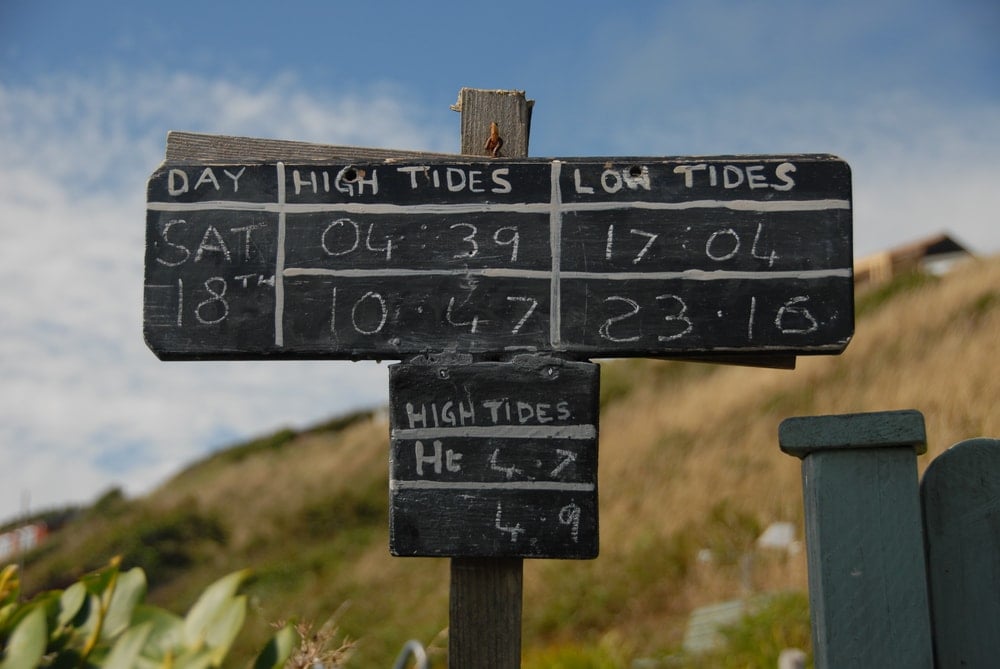
Tides are cyclical events that occur on a daily basis. Over the course of millennia, us humans have learned a lot about tides work, and researchers can now predict tides around the world with incredible accuracy.
Now that you know why tides happen, we can discuss precisely how tides work. Keep in mind that, like most things in life, there are exceptions to every rule, and tides are, well, no exception. To keep things simple, we’ll focus mostly on how tide cycles work in areas with “normal tides,” or, in other words, areas that get two high tides and two low tides each day.
Solar vs Lunar Days
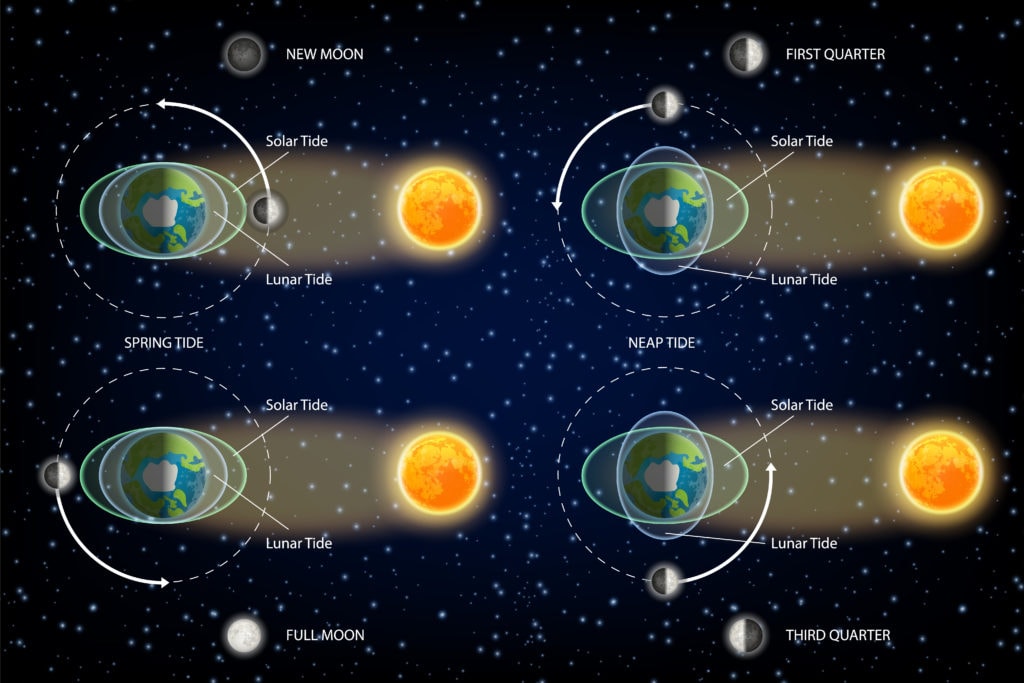
The first thing to understand about tide cycles is that they don’t perfectly follow the cycle of a 24-hour day. A 24-hour day is called a solar day because it’s approximately how long it takes for the Earth to rotate on its axis.
However, tides, which are driven primarily by the moon, operate on a lunar day. A lunar day is 24 hours and 50 minutes long, and it represents how long it takes for a single location on the Earth’s surface to rotate and return to its same position relative to the moon.
This might sound confusing, but the concept of a lunar day is a critical aspect of tide cycles. Since high tides occur whenever a point on Earth faces directly toward or directly away from the moon, the Earth’s position relative to the moon is an essential piece of information.
So, when you think about tides, always remember that the lunar day—and the tide cycle—is 24 hours and 50 minutes long.
You may also like: Man Vs Nature: Understanding What Causes Wildfires And How We Contribute
How Frequent are Tides?
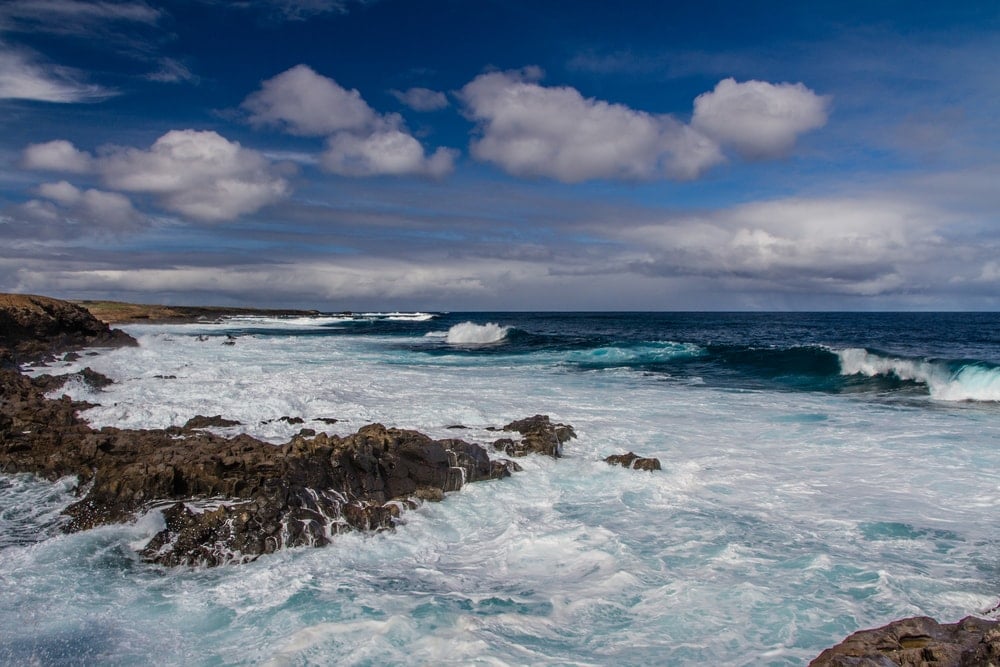
Once you understand the concept of the lunar day, you’re well set up to start calculating the frequency of tides.
In a normal coastal area, we’ll see high tides occur every 12 hours and 25 minutes. That’s because this is half of a lunar day or, in other words, the amount of time it takes for a point on Earth to make half of a rotation with respect to the moon.
Additionally, in a normal coastal area, we’ll also see low tides occur 6 hours and 12.5 minutes after each high tide. This is how long it takes for a point on Earth to rotate so that it’s facing perpendicularly with respect to the moon.
Remember that when a location on Earth is perpendicular to the moon, it no longer experiences the ocean bulging effect from the moon’s tidal forces. As a result, it experiences low tide.
Ultimately, we’ll see a tidal high or a tidal low every 6 hours and 12.5 minutes in areas that experience normal tidal cycles.
You May Also Like: Learn the 19 Incredible Types of Storms: Complete with Facts, Images, Descriptions, & More!
How to Check Tidal Conditions
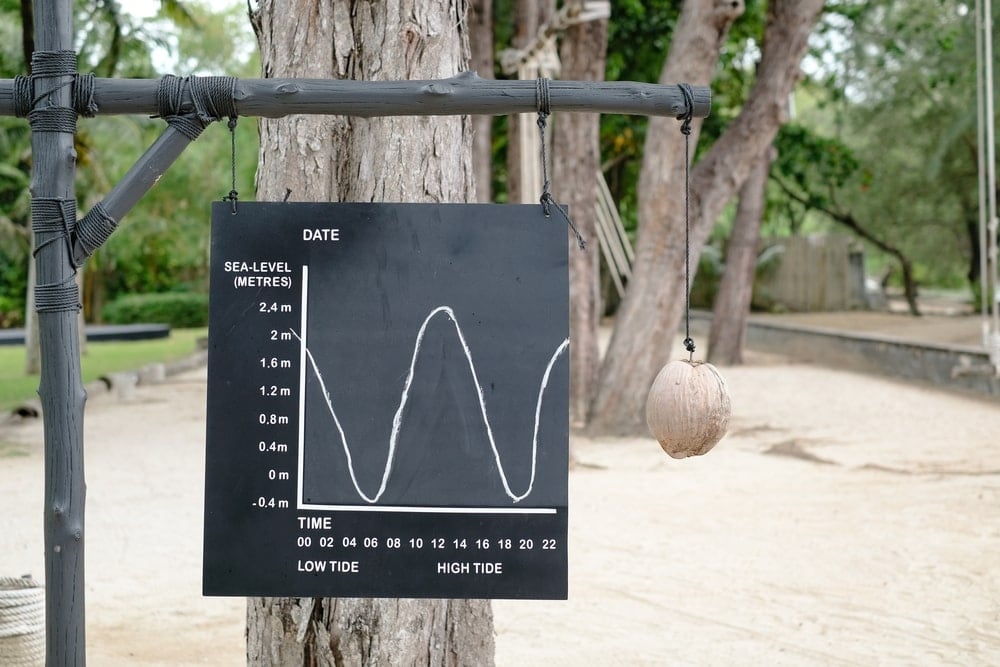
Marine and oceanographic agencies around the world generally publish tidal predictions years in advance for ports, harbors, and bays in their jurisdictions. This information is almost always publicly available and free to access as it’s considered a public good that’s required for safety at sea.
In the United States, you can access official tidal predictions from the National Oceanic and Atmospheric Administration (NOAA) using the agency’s interactive tide portal. Many state-run agencies and major ports also publish their own tidal time predictions. You can access this information on many free tide prediction websites and apps, too.
Additionally, tidal predictions are usually so accurate that they’re published on some marine charts. In particular, you can find symbols called tidal diamonds on British admiralty charts that give you an idea of the direction and speed of the tides in a given area, even in locations that are away from developed harbors.
However, always remember that tidal predictions are just that—predictions. While oceanographers can predict tides with impressive accuracy, extreme weather and other events can cause tides to be higher or lower than predicted.
If you’re using tide predictions to navigate on the water, always give yourself a bit of wiggle room so you don’t run aground or damage your boat during your adventures.
You May Also Like: Read on the 11 Types of Precipitation You Must Know! Complete with Images, Facts & More!
Tides FAQs
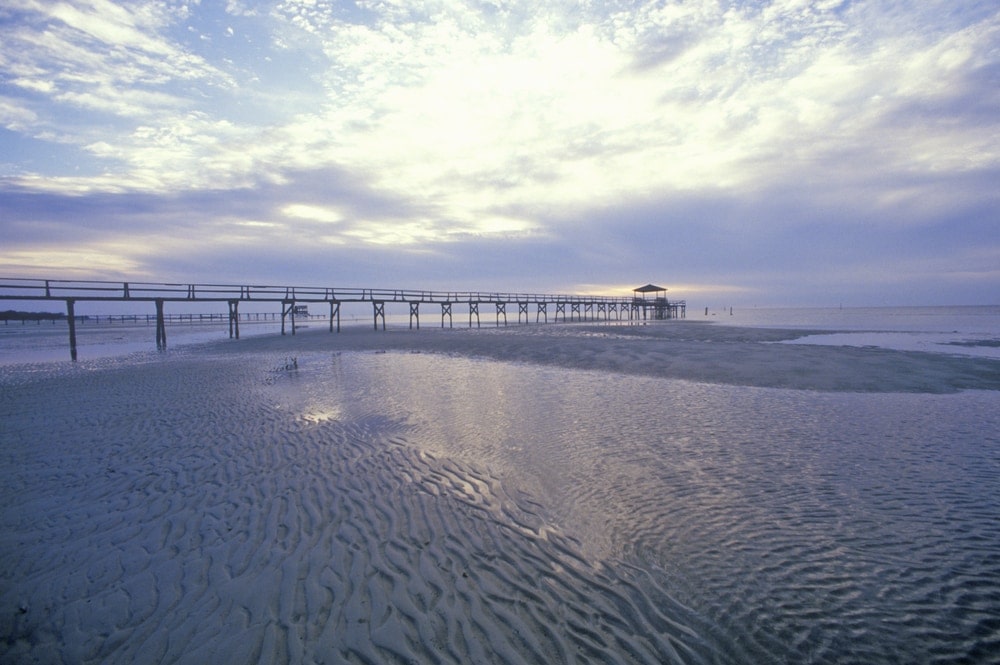
Here are our answers to some of your most commonly asked questions about tides:
How are Tides Created?
Tides form as a result of gravitational forces from the moon and the sun. These gravitational forces cause the Earth’s oceans to bulge on the sides of the planet that are facing toward and directly away from the moon.
All of this bulging water causes high tides that dissipate into low tides as the Earth rotates on a daily basis.
How Do Tides Affect the Size of Waves?
Tides can affect the size of waves by increasing the amount of energy in the water as it moves toward shore. As the tide rises, more water is pushed toward the shoreline, creating bigger breaking waves.
Additionally, at low tide, less water is pushed toward shore, creating smaller waves in the process.
How Often Do Tides Change?
Tides generally change about 4 times each day (2 high and 2 low tides). However, tides operate on a cycle that’s about 24 hours and 50 minutes long, so they don’t perfectly follow the 24-hour solar day.
Most places experience a high tide every 12 hours and 25 minutes. But, there are some tidal locations that get only 1 high tide per day and others that receive 4 high tides.
Do Lakes Have Tides Like Oceans?
Yes and no. Some lakes (mostly very large lakes) experience tidal variations that are caused by the gravitational forces of the moon and the sun. However, the tidal variation on lakes is normally very small. In fact, this variation is only about 5 cm (1.96 inches) on the Great Lakes.
So the vast majority of lakes are effectively considered to be non-tidal, even if they get small tidal variations.










